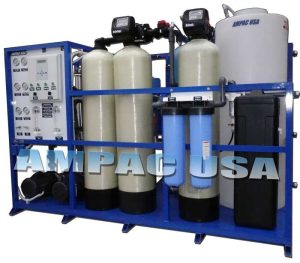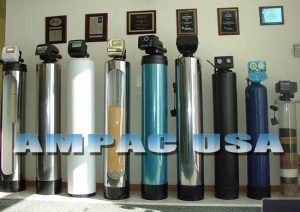Total Dissolved Solids (TDS) refer to the combined amount of organic and inorganic substances found in water. These substances include minerals, salts, metals, and even some ions that are dissolved in water. The measurement of TDS is essential to ensure that water quality is safe for consumption and free from potential health hazards. The levels of total dissolved solids can affect taste, odor, and overall quality, making it critical to monitor TDS levels regularly.
How TDS Affects Water Quality
The TDS level in water has a significant impact on water quality, influencing both its safety and usability. A high concentration of TDS can be a sign of various contaminants such as calcium and magnesium, heavy metals, and even industrial chemicals. Depending on the type of dissolved solids present, these contaminants can alter the taste and hardness of the water.
For drinking water, the Environmental Protection Agency (EPA) recommends that TDS levels should be below 500 ppm (parts per million). High TDS levels in drinking water can make it unpalatable and potentially harmful to health, especially if certain toxic metals or chemicals are present.
Why You Should Measure TDS Levels in Water
Measuring TDS levels in water is an effective way to assess the quality of water. It helps determine the effectiveness of water filtration systems, ensuring that they are performing correctly and removing impurities. High TDS levels are often a sign that your water filter or water softener may require maintenance or replacement.
Using a TDS meter, you can easily check the TDS in drinking water. This small device measures the conductivity of water, which directly correlates to the amount of dissolved solids present. By regularly monitoring TDS, you can ensure that your water remains safe and within recommended limits.
Health Implications of High TDS Levels
While the presence of certain minerals like calcium and magnesium is generally considered beneficial for health, an excessive amount of these substances can be problematic. High TDS levels can result in:
- Hard water, which can lead to scale buildup in pipes and appliances.
- Unpleasant taste in drinking water.
- Potential risk of exposure to harmful contaminants like lead, arsenic, or nitrate, which may be present at high concentrations.
If TDS levels exceed 500 ppm, it is advisable to use advanced water treatment solutions such as reverse osmosis (RO) systems or water softeners to bring down the concentration of dissolved solids.
How to Measure TDS in Water
To accurately measure the TDS level in water, you need a TDS meter. This meter is a handy device that provides an instant reading of the total dissolved solids in water, expressed in ppm. Follow these steps to measure TDS:
- Collect a water sample in a clean container.
- Turn on the TDS meter and immerse its probe in the water.
- Wait for a stable reading, which usually takes a few seconds.
- Note the TDS level displayed on the meter.
A TDS reading below 300 ppm indicates low TDS, which is ideal for drinking purposes. Levels between 300-500 ppm are considered acceptable, while anything above 500 ppm requires further water filtration.
Methods for Reducing TDS in Water
To reduce TDS in water, you can opt for several water filtration technologies depending on your specific needs:
- Reverse Osmosis (RO) System
Reverse Osmosis is one of the most effective methods for reducing TDS in water. It works by forcing water through a semipermeable membrane that removes up to 99% of dissolved solids, making it suitable for drinking and cooking. RO water is considered safer and tastes better due to the significant reduction in contaminants.

- Water Softeners
Water softeners specifically target calcium and magnesium ions that contribute to water hardness. These devices use a process called ion exchange to remove hardness ions and replace them with sodium or potassium ions. While water softeners do not eliminate all dissolved solids, they are effective in reducing TDS related to water hardness.
- Distillation
Distillation involves boiling water to produce steam, which is then condensed back into liquid form, leaving most of the dissolved solids behind. This method is particularly useful for reducing a wide range of contaminants, making it one of the best ways to achieve low TDS levels.
- Deionization (DI)
Deionization filters use resins that exchange hydrogen and hydroxide ions for dissolved minerals, effectively removing charged particles from water. While DI filters are highly effective in reducing TDS, they are often used in combination with other treatment methods like RO to ensure comprehensive water purification.
The Importance of Monitoring TDS Levels Regularly
Consistent monitoring of TDS levels is essential to maintain optimal water quality. High TDS levels can be a sign of underlying issues like contaminated tap water, inefficient filtration, or natural water sources with elevated mineral content. Monitoring helps identify when water treatment systems need adjustment or replacement.
Regularly checking TDS is especially critical in industries that rely heavily on water filtration and purity, such as:
- Food and beverage production.
- Pharmaceutical manufacturing.
- Aquatic life care and fish farming.
- Drinking water supply systems.
In each of these sectors, maintaining the appropriate TDS levels ensures not only water quality but also compliance with health and safety standards.
Conclusion
Understanding the TDS level in water and knowing how to measure and reduce it is crucial for ensuring safe, clean water for drinking, cooking, and other uses. By regularly testing and maintaining acceptable TDS levels, you can protect your health and improve the longevity of your water filters and other appliances. Adopting advanced water filtration methods like reverse osmosis, water softeners, and distillation can significantly reduce TDS, making your water safer and better tasting.
Maintaining a low TDS level aligns with the goal of optimal water quality—a key factor in supporting overall well-being and ensuring that water is free from potential health hazards.











